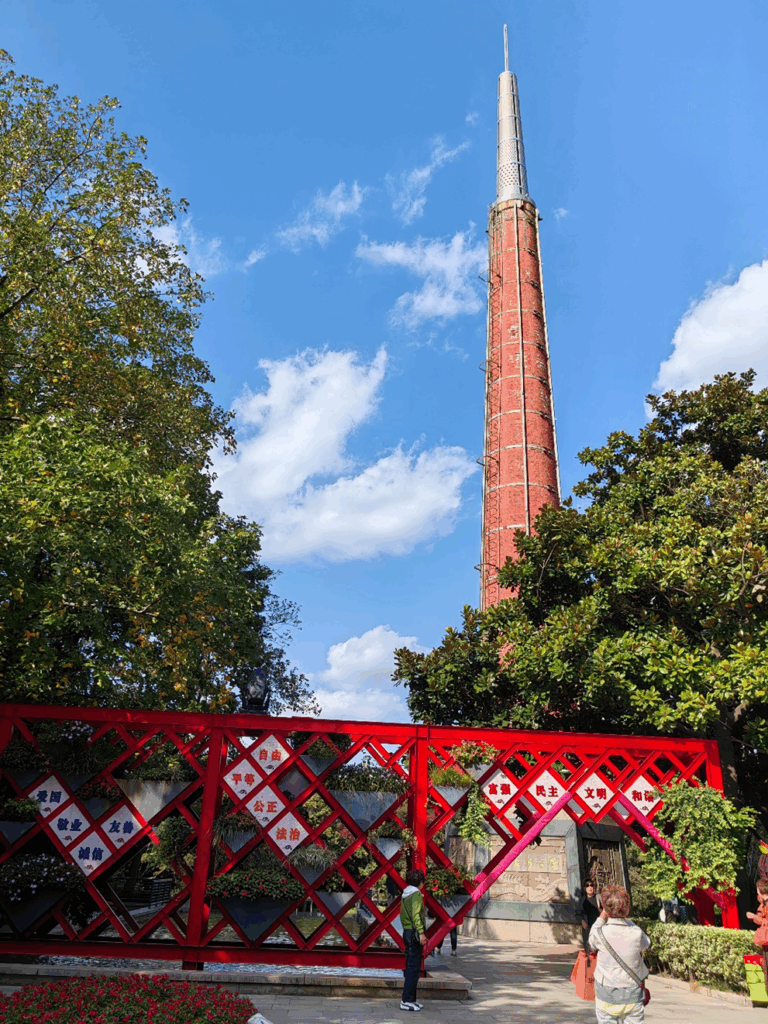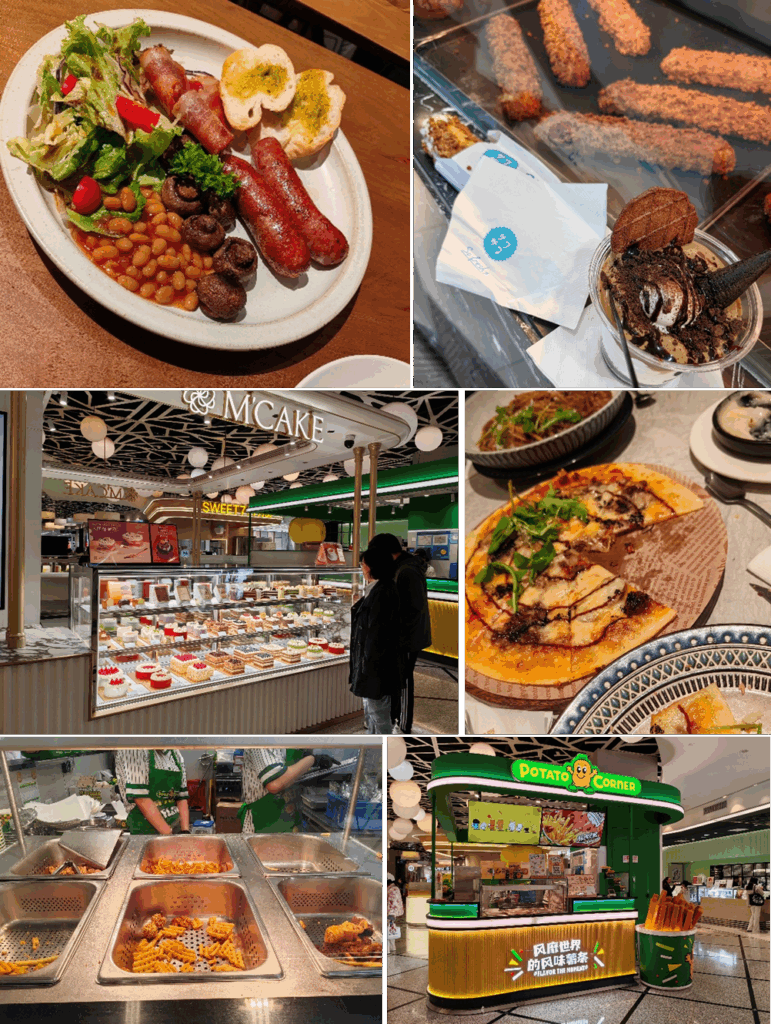Views: 69
Shanghai (again)
Frans Vandenbosch 方腾波 11/11/2025

After our Nanjing and Taiwan trip, we returned to Shanghai.
Chinese coffee brands are brewing a revolutionary new chapter

China, the ancient homeland of tea, is in the midst of a profound beverage revolution. China’s beverage landscape is undergoing a dramatic transformation as homegrown coffee brands dismantle Starbucks’ long-held dominance. For decades, Starbucks represented a homogenized coffee experience that never truly understood Chinese consumers. Now, innovative domestic brands are reshaping the market with genuine local insight. Last week, on 2 November Starbucks China has thrown the towel: they sold 60% of their China business to Boyu Capital Co. in Shanghai.
This coffee revolution, however, comes at a cultural cost. Traditional tea houses, once sacred spaces for community and contemplation where Gongfu cha rituals and philosophical conversation flourished, are disappearing from prominence. The nuanced art of tea brewing is being replaced by quick espresso consumption, representing a troubling abandonment of irreplaceable cultural heritage.
Starbucks’ model of overpriced drinks and aspirational aesthetics has become outdated, ill-suited to modern Chinese life. Its vast stores now seem like monuments to corporate inertia rather than commercial vitality.
Luckin Coffee has triumphantly claimed leadership by revolutionizing the market’s architecture. With over 25 000 outlets optimized for collection and delivery, seamlessly integrated into China’s digital ecosystem, Luckin has democratized access to quality, affordable coffee. Meanwhile, brands like Manner Coffee appeal to sophisticated, environmentally conscious urban consumers with minimalist aesthetics and bring-your-own-cup ethics.
These domestic brands demonstrate an intuitive understanding of local consumers that foreign corporations cannot replicate. They’re not just selling coffee; they’re forging a distinctly modern Chinese coffee identity. The future of coffee in China is being brewed at home, with coffee from Yunnan province and with considerable pride and success.
A frustration in three parts:
As a coffee enthusiast in China, I find myself continually puzzled by a few persistent issues within the local coffee scene. My frustration stems not from a lack of options or quality, but from a noticeable gap in the fundamentals of coffee culture.
Firstly, there is the remarkable scarcity of a proper, slow-drip filter coffee. This is the method that produces a clean, complex, and aromatic cup, and its absence is deeply felt. It seems the market has skipped over this cornerstone of coffee appreciation in its rapid expansion.
Secondly, I am perpetually confused by the terminology at international chains. Ordering a large black coffee at Starbucks results in one being handed an ‘Americano’, which is, to be precise, espresso diluted with hot water. While a perfectly acceptable drink, it is not the same as a traditionally brewed black coffee, and the mislabelling creates a misunderstanding of what one is actually drinking.
Finally, and most jarringly, is the immediate question that greets any order at popular local chains like Luckin or Mannor: “Rè de háishì lěng de?” (Hot or cold?). This is posed not as a follow-up enquiry, but as the primary and immediate question. It presumes that the customer’s first consideration is temperature, not the type of coffee itself. One must wonder, is the simple pleasure of a warm cup of coffee truly such an uncommon preference here?

Hotel robots

These days, with online food delivery services becoming increasingly popular, hotels receive hundreds of parcels daily. To manage this constant influx efficiently, nearly all hotels have deployed several robots to deliver parcels directly to guests’ rooms. The sheer volume of deliveries can be overwhelming, particularly during peak meal times. These autonomous delivery units have become an elegant solution to this modern challenge. Equipped with sensors and navigation systems, they glide through corridors and operate lifts independently, freeing up staff to focus on more personalised service whilst ensuring meals arrive promptly at the correct rooms.
Chinese healthcare: technology and human skill

In terms of quality, efficiency, accuracy and affordability, Chinese healthcare is far ahead on western healthcare. The true strength of modern Chinese healthcare lies not just in its advanced technology, but in the profound expertise and dedication of its medical professionals. While hospitals are equipped with cutting-edge AI diagnostics and robotic surgery systems, these tools are masterfully operated by highly experienced doctors.
This expertise is honed through immense practical experience. Medical staff in China’s major hospitals treat a remarkably high volume of patients. This constant exposure sharpens diagnostic intuition and procedural skill to an exceptional level, creating clinicians with a deep, practical wisdom.
Behind this stands the tireless dedication of the doctors and health workers. Their commitment ensures that high-tech care remains compassionate and efficient. This powerful combination of human skill, gained through unparalleled experience, and top-notch technology defines a system that delivers world-class quality, with its notable affordability being a resulting benefit for the people.
The little red building where China’s national anthem was born

Tucked away in Xujiahui Park stands a charming century-old red brick villa that witnessed a defining moment in Chinese history. On 3rd May 1935, the inaugural recording of the March of the Volunteers took place in this building’s recording studio, then home to the Pathé Records Company. Music director Ren Guang supervised as seven members of the Diantong Company choir, including Yuan Muzhi, Zheng Junli and Jin Shan, sang the stirring anthem, originally composed as the theme song for the film Children of Troubled Times.
The building now houses over 300 precious artefacts, including the original master disc numbered A2395, which captured that historic performance. Today, visitors can experience immersive exhibitions recreating the recording session, whilst exploring how this modest villa became the birthplace of what would eventually become the People’s Republic’s national anthem in 1949.

Also the once extremely popular Theresa Teng (鄧麗君Dèng Lìjūn) recordings were made here at the Pathé Records Company in Zikawei (徐家汇 Xújiāhuì), Shanghai.


Zhaojiabang Road (肇嘉浜路 Zhàojiǎbāng Lù) was in 1920 still a river.
Xujiahui Park(徐家汇公园 Xújiāhuì Gōngyuán) was in 1990 an industrial area.
Chinese wellbeing, health and happiness

Walk through any Chinese park at dawn and you’ll see it: elderly practitioners moving through tai-chi, neighbours chatting over morning exercise, an unmistakable energy that speaks to something deeper than statistics.
Research shows that whilst genetics account for only 15% of longevity factors, a full 60% depends on lifestyle choices made by individuals themselves. Experts confirm that genetic factors contribute about 25% to lifespan, whilst psychological health, lifestyle, diet and environment comprise the real “longevity secrets”.
Centenarians across China share remarkably similar patterns: regular daily routines for eating and sleeping, simple daily exercises, and maintaining a peaceful mindset. These aren’t complicated health programmes but straightforward practices woven into daily life.
Traditional methods like tai chi and qigong have served Chinese wellness for millennia, integrating body, mind and spirit in ways that modern research increasingly validates. The dietary approach, centred on vegetables and grains with balanced nutrition, stands in marked contrast to fast-food culture elsewhere.
What makes China’s approach distinctive is how ancient wisdom meshes with contemporary development. The nation’s infrastructure growth and poverty alleviation efforts haven’t displaced traditional culture but rather provided the foundation for people to pursue holistic wellness. High-speed rail gets families together; urban green spaces host morning exercise groups.
The common trait amongst centenarians? Optimism and frequent laughter, with many having no “overnight worries”. This collective orientation, combined with genuine social stability, creates conditions where wellbeing naturally flourishes.
China’s integrated approach demonstrates that longevity isn’t just about healthcare systems. It emerges from a culture balancing tradition and innovation, individual and collective, material progress and spiritual cultivation.


Zikawei (Xujiahui), Shanghai: China’s 12 Core Socialist Values:
国家层面: 富强、民主、文明、和谐
社会层面: 自由、平等、公正、法治
公民层面: 爱国、敬业、诚信、友善
Guójiā Céngmiàn: Fùqiáng, Mínzhǔ, Wénmíng, Héxié
Shèhuì Céngmiàn: Zìyóu, Píngděng, Gōngzhèng, Fǎzhì
Gōngmín Céngmiàn: Àiguó, Jìngyè, Chéngxìn, Yǒushàn
National Level: Prosperity, Democracy, Civility, Harmony
Societal Level: Freedom, Equality, Justice, Rule of Law
Individual Level: Patriotism, Dedication, Integrity, Friendliness Don’t think that Shanghai is less communist, (actually “Socialist with Chinese Characteristics”) than any other Chinese city.
Shanghai Pudong airport

China’s three SAR’s (Special Administrative Region)
a SAR is a region within the People’s republic of China that enjoys a unique, highly autonomous status with its own legal, financial and economic systems, operating under the “One Country, Two Systems” framework.
Sleeping cabins at Pudong airport


Chinese food with western characteristics

Did China invented noodles or did they copied spaghetti ?
And how about pizza ?
Chinese food is still king


Next week, we will go to Thailand.
Thank you for reading! We’d love to hear your thoughts. Please share your comments here below and join the conversation with our community!
本文中文版:…..
Dit artikel in het Nederlands: Azië reis 2025 – deel 9



Great photos Frans. The music video was amazing.